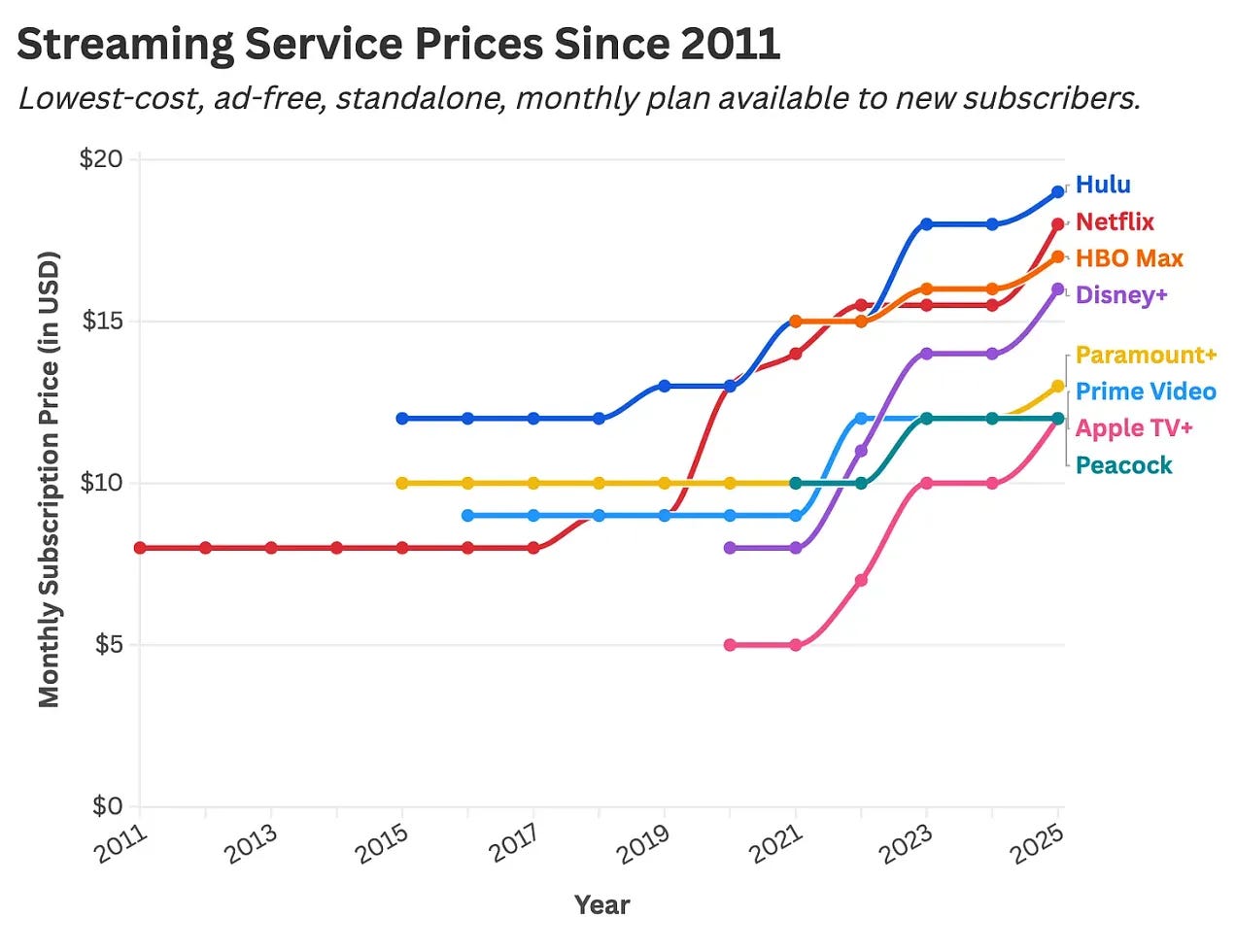Source: Stat significant
I cancelled my subscription to Disney+ yesterday. I should have stopped it earlier because Disney owns ABC, which appeased the MAGA movement by suspending Jimmy Kimmel.
But I am a useless activist. By the time I realised that Disney was behind the Trumpian attack on freedom of speech, ABC had reinstated Kimmel and my chance to make a pointless gesture had vanished.
Mortified by my failure to signal my virtue, I cancelled my subscription for the boringly practical reason that it was a waste of money.
There are few new programmes on Disney+. Those shows that make it to the screen suffer from an evident failure to spend money on decent script writers. (If there’s one thing writers agree on, it is the need to spend money on writers.)
Not that Disney seems to care. It’s hiking up its prices everywhere.
In the UK, the cost of the standard annual subscription will rise to £99.90, which is £10 more than the present price.
In the US Disney+ is raising prices for the fourth year in a row. The ad-free subscription to Disney+ went up 14% last year and is now up another 19%.
As prices rise, content falls. Disney’s outlay on content, excluding sport, was 30% lower in 2024 than in 2022. Apple TV is cutting back on shows after its streaming service failed to find a significant audience. But the cuts have not stopped Apple from raising prices. It’s behaving as if it believes it can milk its captive viewers.
Netflix stands out. It is still pouring money into programme making. But it won’t be beaten on price rises either, and has just increased its standard subscription without adverts, by £2 to £12.99 a month.
The American cultural critic Ted Gioia, whose newsletter is always worth reading, says streaming managers are like venture capitalists squeezing money out of a dying business.
I saw the process at work in national newspapers. My colleagues would sit in the newsroom wondering why on earth the management was raising the price of the print edition yet again.
We finally worked out that there was an elderly group of readers that newspaper managers believed they could fleece. These readers kept paying for print out of habit or because they did not know how to change their direct debit.
Eventually, of course, they would either work out that they were being tricked or die. Either way it was not a sustainable business strategy in the long-term.
But hold on a minute, surely the comparison should be absurd.
Aren’t we meant to be living in a golden age of television? Why are streaming companies behaving as if they are in a dying industry?
Before looking at the reasons for the price hikes, I feel overcome by a need to say that the price of this newsletter has not risen once in three years – despite inflation, despite our friend Mr Putin sending energy costs through the roof, and despite the terrible example set by the fat cats of the Disney corporation.
Annual subscriptions work out at £1.15 ($1.45) a week. Subscribers allow me to keep this project going without advertising or clickbait or proprietorial interference. Please sign up as a free or paying subscriber if you can.
I will not deny that Ted Gioia is telling part of the story. Streaming service bosses are indeed letting greedflation rip
They are so confident that a captive market will absorb extra costs, they even boast about it.
Over in the music business,
Keep reading with a 7-day free trial
Subscribe to Writing from London to keep reading this post and get 7 days of free access to the full post archives.


